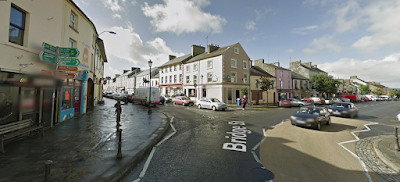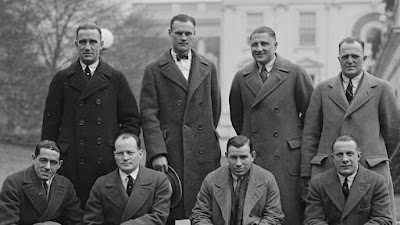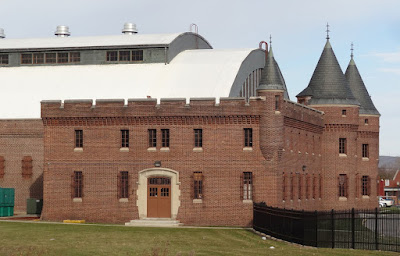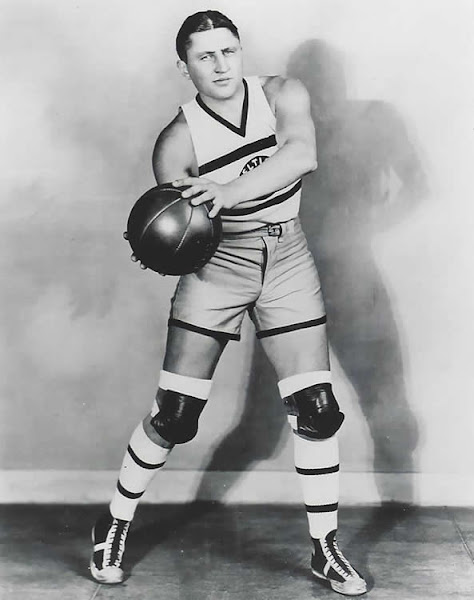In that post (Share and Share Alike) I mentioned my correspondence with a mysterious "Mr. D". His grandmother was the sister of Luke. He told me that the family came from the village of Swinford in County Mayo. If you’re not familiar with the geography of Ireland, Mayo (Contae Mhaigh Eo) is in the west of the country, in the province of Connacht. Today, in addition to Mayo, Connacht is made up of the counties of Galway, Leitrim, Roscommon, and Sligo. It’s also home to one of the three surviving dialects of the Irish language. Here are found the most populous Gaeltacht areas, regions in which the first language of the inhabitants is Irish.
In writing that the family “came from … Swinford,” I may be giving the impression that this was the ancient home of the Whites. Not so: Swinford was only established in the late 1700s, and it was a planned town. It was founded by the Brabazons, an Anglo-Irish family that came out on the short end of armed conflicts in the mid 1600s and the subsequent settlements imposed on them by Oliver Cromwell. The Brabazon family lost its castle and land in Galway and were resettled in lands in farther north in Mayo.
The origin of the name Swinford, sometimes spelled Swineford in the past, is the subject of some small dispute. According to one account it is exactly as its name implies: the site of a ford across the river where swine would be taken to a local pig market. The Irish name for the town, Béal Átha na Muice, is an exact reflection of this. Béal átha is an “approach to a ford,” and na muice means “of the pig.” The other story is that the town was named for and modeled after a town by the same English name in Leicestershire, England. Support for this idea comes from the fact that the Brabazons were originally from Leicester. The two accounts are not mutually exclusive, and both may have a bit of the truth.
Luke White reported on his World War I draft registration form that he had been born on May 14, 1873. I have reason to doubt this. At this time in Ireland it was mandatory to register all births with the civil authorities. Failure to do so would result in a fine. However, I have not been able to find any such registration in 1873. What I did find was a baptismal record for a boy named Luke, son of Luke White and Ellen Brennan. The date on that record is August 17, 1869: quite a difference, but not at all unusual. It’s possible that this child died young, and their next boy was also given the name Luke, but I’ve found no evidence at all for this. Actually, the credit for finding that baptismal record should go to Jill Dale and her website County Mayo Beginnings. Her focus was on the Brennan family, that of Luke’s mother. She has one page where she focused in on the records for the Brennan and White families in the townland of Cloonaghboy, and this is where I found the baptismal record.
Luke Sr. and Ellen Brennan were married on February 9, 1857 in Swinford. I have not been able to discover the names of Luke’s parents; Ellen’s father was named Martin Brennan. Unfortunately, the parish records for the time period in which they were probably born are not available. I have come across a few DNA links that suggest an identity for a sister of Ellen, but so far no documentation.
Griffith’s Valuation, published in 1856, identifies the properties on which Luke Sr. was living at the time. The farm was just to the southeast of the town of Swinford. The “roads” in the area are still recognizable on Google Maps. You can see from the condition of the road that even today it doesn’t look like it’s a heavily travelled area!
Moving forward in time, knowing the names of Luke and Ellen made it possible for me to find records of the births of several children, a few of which I knew from Mr. D’s correspondence. They were Mary (b. 1857), Martin (b. 1861), Edward (b. 1867), James (b. 1869), Ann (b. 1871), and Ellen (b. 1874). The names Edward and Martin jumped out at me: Edward Martin White was the name of my great uncle. The three girls all ended up emigrating to the U.S., specifically to Brooklyn. The records there are few, and they’re a bit confusing. My best understanding is that both Ann and Mary married men named Flannery, Joseph and Bernard respectively. Ellen married John F. O’Neill, from County Tyrone. I’ll come back to the Flannery connection shortly.
The son Edward White remained in Ireland, and as far as I can tell he lived in Swinford for the rest of his life. In 1912 he married Mary Groarke (1893-1964), a woman 26 years younger than him. (That is, if I have my dates right.) I know of four children, but the Irish birth records are only accessible online up to the year 1921, and I suspect I’m missing some. Edward died in 1944. Of the other two brothers, James and Martin, I know nothing.
One interesting note that I stumbled on was that Luke Jr. “enlisted” in the British Army in 1890. To be specific, he enlisted in the 3rd Battalion of the Connaught Rangers. He claimed to be 18 years old, 5 foot 3 inches in height, weighing 124 pounds; dark brown eyes, blackish brown hair, and with a scar on his abdomen. I haven’t been able to discover what his unit was doing in 1890. The Rangers were organized in the 1700s and fought in the Napoleonic wars. In later times they fought in the Boer War in southern Africa as well as in the First World War. By that time, though, Luke had emigrated to America. Although his enlistment record that he signed says that he agreed to a six-year term, I have a record of a Luke White, 20 years old, coming into New York in 1892. Is this the same man, and if so, what does that imply?
I promised to come back to the Flannerys. The records, as I said, are sparse and confusing. But I’m fairly certain about one thread. Ann White seems to have married two different Flannerys: whether they’re related or not, I can’t say for sure. I mentioned Joseph, and the other husband was named Peter J. Flannery (1876-1943). They may have had two children: I’m pretty sure about a girl named Dorothy Margaret Flannery (1912-1956), but I’m less sure about Martin Douglas Flannery. I know that Martin was a family member. However, he may have been the adopted son of Ann’s sister Mary, who died in 1922.
Dorothy seems to have been an interesting person. I found a couple of letters that she had written to the local newspapers in Brooklyn. One was published in a syndicated column called Listen, World, written by Elsie Robinson. Listen, World ran from 1924 to 1956 and was distributed by King Features Syndicate. Here is Dorothy’s letter:
Dear Elsie Robinson,
I’m sending my puzzle to you and I hope you can help. You see there’s something wrong with me and I have often wondered if I am a little mad.
I’m seventeen and I like parties, dancing, necking and most all the things people do but my pleasure is always being spoiled for me because in the midst of it the thought will come crashing down – what’s the use? How futile it all is! Then instantly all my enthusiasm is gone and I feel helpless.
I see people rushing back and forth, and call them fools for bothering, when all the time, perhaps, I myself may be the fool. It’s hard, Elsie, to be so young and to know that people never mean what they say – to know that they hide their real selves from you under a veneer. I have only two that I can really call my friends – a girl and a boy – but though I have known them both for many years I dare not study them for fear that if I probe too far they will turn out to be like the others.
That’s one big trouble – the shallowness of people. Another is that I can find no career or work to interest me. I’m too restless. I have been to six schools since I graduated from grammar three years ago leaving each as soon as I became accustomed to it. I can’t keep on doing the same thing day after day – the monotony is unbearable. What does one do in a case like this?
DOROTHY FLANNERY
No. 192 Garfield place, Brooklyn
I found this copy of the letter published in the Albany Times Union, 01 June 1929. I won’t go into Elsie’s response, other than to say that – in my opinion – she was a bit of an ass.
For quite some time Dorothy was a mystery to me. After her father’s death in 1943, I could not find any record of her anywhere. Then, in the past year, I’ve been in contact with one of her daughters and her grandson, made possible by DNA matches. It turns out that in 1949 Dorothy married a man named Frederick Dehnert (1900-1985). As I started searching using the name Dehnert, I got a big surprise.
Dehnert was the son of the German immigrants Henry (Heinrich) Dehnert and Gertrude Biel. He had two sisters, Katherine and Irene, and one brother, Henry. If you’re a big sports fan, perhaps you already know where this is leading. Henry G. Dehnert (1898-1979) is much better known by the name of Dutch Dehnert.
Dutch was a forward for the original Celtics basketball team: not the Boston Celtics, but their precursor. The original team was based in New York, and they played their games in Madison Square Garden. It was basically a barnstorming team and was a force in the 1920s. In one year, they played a 205 game schedule, and their record of 193-11-1 speaks to their dominance. I had even heard of one of those players before, the center Joe Lapchick.
Dehnert was a 6’1” forward, weighing 210 pounds. He started his career as a professional with teams like Danbury/Jersey City-Norwalk, Wilkes Barre-Nanticoke, Bridgeport, Philadelphia, Scranton, and even Utica. That last team was the Utica Utes; they played in the old Utica Armory, a venue with a seating capacity of 1,300. Over Dutch’s entire playing career of 433 regular season games from 1917¬-1939 he averaged a whopping 4.6 points per game. When the playoffs rolled around though, he came through with an average of 3.6 points per game over 31 games. It was a different game in those days!
One of the differences was that after every made basket, there was a jump ball to determine possession. No three-point shots, of course. But there was another contrast with the modern game, one for which Dutch Dehnert was given credit. Basketball lore says that he created and perfected the so-called “pivot play.” In this, Dutch would position himself somewhere around the foul line with his back to the basket. He’d get the ball, and then his teammates would cut past him, either right or left. Dutch would deftly pass to the teammate and then would immediately cut toward the basket in the opposite direction from which he passed. With the pivot play the focus of their offense, the Celtics won the American Basketball League championship in both 1927 and 1928. It turned out that this scheme was so devastatingly effective that the basketball powers-that-be changed the rules of the game so that it was illegal for an offensive player to remain close to the basket for more than three seconds. This was the birth of “the lane” and the modern offensive 3-second rule. The original Celtics team was inducted into the Basketball Hall of Fame in 1959, and Dutch Dehnert himself was inducted as a player in 1969.












